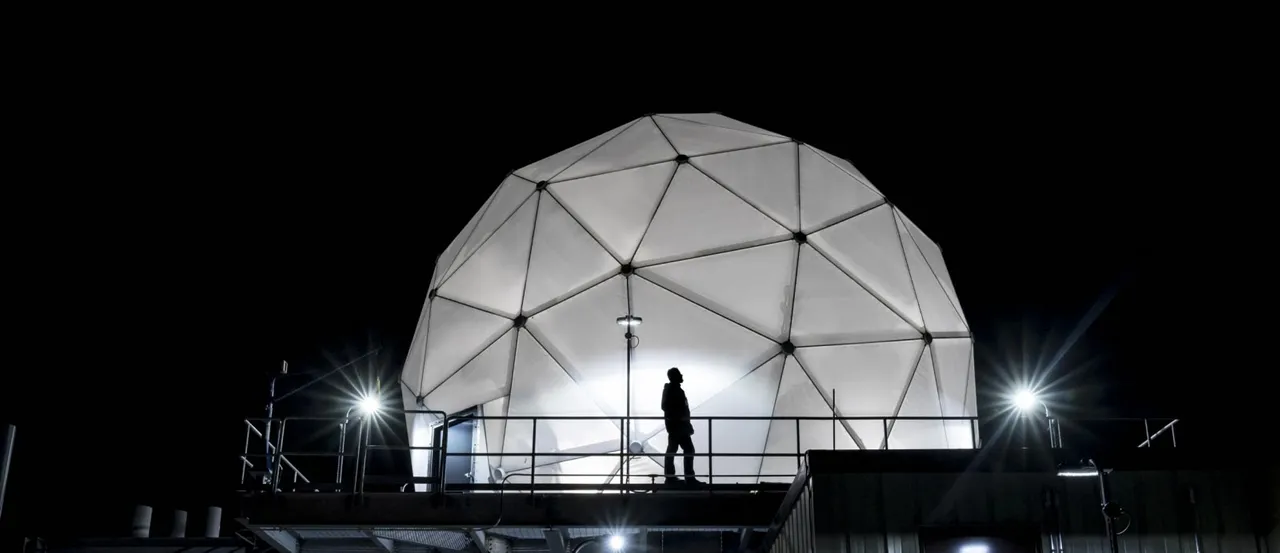MIT develops reconfigurable antenna for Advanced Satellite Communications Testing

We are aware of the role of signals transmitted over the internet. From making television visible to security applications, it has come a long way. Each new day brings up a new development in discrete fields. Such a technological development has come across in the field of satellite communication.

Keywords: satellite, antenna, bands, MBTT, SATCOM, OTAKaTT, RF, PTW, SkyNet 5C
MIT(Massachusetts Institute of Technology) has developed a reconfigurable antenna. This antenna can transmit and receive signals over multiple radio-frequency bands. This antenna is relevant to military and commercial applications.
Features of this reconfigurable satellite are:
- It is a 38-foot-wide dome-shaped radio antenna.
- It has a climate-controlled environment with a steel structure that supports a 20-foot diameter.
- It is a 20,000-pound SATCOM antenna.
- It can rotate 15 degrees per second by completing a single revolution in 24 seconds.
- It can detect and track satellites in medium and low Earth orbit.
This antenna is called Multi-Band Test Terminal(MBTT). Before the installation of MBTT, the laboratory was dependent on various smaller antennas such as OTAKaTT(Over-the-Air-Ka-band Test Terminal ). Compared to OTAKaTT, MBTT is seven times more sensitive. It is specially designed to ease the reconfiguration for supporting multiple radio frequency(RF).
Brain Wolf, a technical staff member in Lincoln Laboratory's Advanced Satcom Systems and Operation Group said, "As a much larger, more powerful, and more flexible test asset than OTAKaTT, the MBTT is a game-changer for enabling the development of advanced SATCOM technology".
MBTT was designed for supporting four commonly used bands for satellite communication: X, Ku, Ka, and Q. These bands span frequencies from 7GHz to 46 GHz. However, MBTT can prove to be supportive to even other bands in near future. This can be achieved through the design of additional antenna feeds, the element connecting the antenna to the RF transmitter and receiver.
With the view of switching between the various RF bands, MBTT must be configured with a new antenna feed in such a way that it emits signals onto and collects the signals from the antenna dish, and RF processing components. When it is not in operation, the MBTT command center stores antenna feeds and other RF components.
The feeds come with variations in sizes. The largest is six feet in length and weighs nearly 200 pounds. The feed and all the RF processing components such as the high-power amplifier and the downconverter needs to be replaced. Before running any tests, technicians must rectify the new feed for ensuring its proper operation.
MBTT has supported a wide range of tests including PTW. PTW is a waveform for providing highly secure and jamming-resistant communications. The laboratory used its PTW modem prototype as the terminal modem to conduct an over-the-air test with the Inmarsat-5 satellite. In 2020, the laboratory used the MBTT for demonstrating PTW at X-band over SkyNet 5C. SkyNet 5C is a military communications satellite that provides services to the British armed forces and coalition North Atlantic Treaty Organization forces.
“It’s an exciting time to be involved in this effort, as vendors are developing real SATCOM systems based on the concepts, prototypes, and architectures we’ve developed,” says Wolf.
MBTT also supported non-PTW testing. Technicians there have tested new signal processing technology for suppressing or removing jammers, new techniques for signal detection, and new methods for connecting PtW users to other departments of Defense systems.
Story Source:
Materials provided by MIT. The original text of this story is licensed under a Creative Commons License. Note: Content may be edited for style and length.
Journal Reference:
ARIANA TANTILLO, MIT LINCOLN LABORATORY
0 Comments